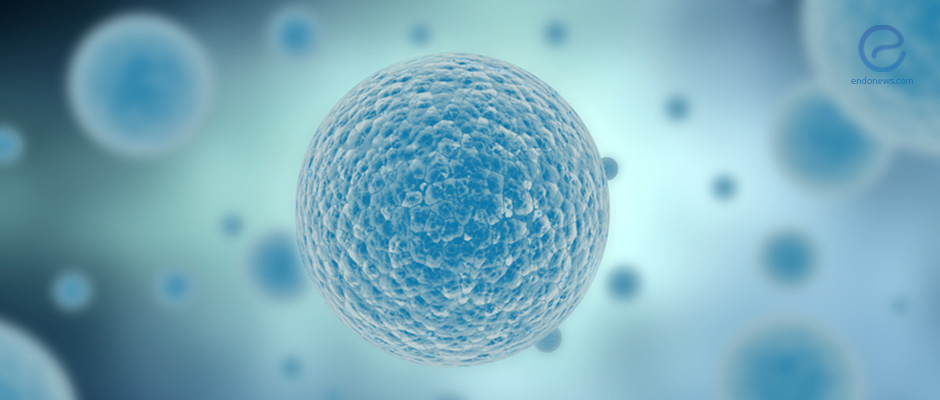Endometrial stem cells and Endometriosis
Apr 11, 2018
Endometrial stem cells and their role in the pathogenesis of endometriosis
Key Points
Highlight:
- Endometrial stem cells may be used to establish the diagnosis of endometriosis or as therapeutic target.
Key points:
- The regenerative capacity of the endometrium.
- The remarkable regeneration of the endometrium is likely mediated by stem (or progenitor) cells located in the basalis.
- This supports the proliferation and repair of both the stromal and epithelial cell compartments.
- Stem cells in human endometrium.
- Endometrial mesenchymal stem cells (eMSCs).
- Multipotent, self-renewing, adult stromal stem cells that reside in both the basalis and functionalis layers of the endometrium (CD140b+, CD146+ or SUSD2+)
- Endometrial epithelial progenitor cells (eEPs).
- N-cadherin+ was identified as the first specific marker for human eEPs.
- Side population (SP) cells.
- A heterogeneous population predominantly comprising endothelial cells.
- The role of stem cells in endometriosis pathogenesis.
- Sampson's Theory of Retrograde Menstruation.
- Retrograde flow of menstrual debris is the main cause of endometriosis.
- Neonatal Uterine Bleeding.
- A potential mechanism for early-onset endometriosis that could involve endometrial stem cells.
- Endometrial Stem cells and Progesterone Resistance.
- eMSCs may have a role in the progesterone-resistant phenotype of endometrial stromal fibroblasts that contribute to infertility of women with endometriosis.
- Implications for clinical practice.
- Diagnosis.
- Future tests may lie in stem/progenitor cell analysis such as identifying eMSCs in menstrual blood
- Stem cell targeted therapies.
- Stem cells in menstrual debris are likely to play a crucial role in the survival of a menstrual fragment and then its formation of a lesion
Limitation:
- The differentiation pathway of human eEPs and their molecular signature, and cellular functions in the postulated hierarchy at different stages of the menstrual cycle needs investigation.
- The quality and quantity of endometrial stem cells shed in the pelvic cavity should be studied in women with and without endometriosis to elucidate their role in the pathogenesis of endometriosis.
Lay Summary
Human endometrium is a cyclically proliferative tissue, and this monthly regeneration is likely mediated by endometrial stem (or progenitor) cells.The upper functional layer of the endometrium breaks down and is shed into the uterine cavity during menstruation. Re-epithelialization and repair of the endometrium is a rapid scar-free process, and re-epithelialization is rapidly followed. The new functionalis layer arises from the underlying basal layer, which contains the progenitor cells required to support repetitive regeneration. The remarkable recovery of the endometrium is likely mediated by stem cells located in the basalis, which promote the proliferation and repair of both the stromal and epithelial cell compartments.
Cousins et al. from Hudson Institute of Medical Research of Australia published a review in February 2018 issue of the journal Best Practice & Research Clinical Obstetrics Gynecology.
Several different populations of stem cells have been identified in the endometrium. They are categorized into three groups; (1) CD140b+CD146+ or SUSD2+ endometrial mesenchymal stem cells (eMSCs), (2) N-cadherin+ endometrial epithelial progenitor cells (eEPs), (3) Side population (SP) cells which is a heterogeneous population predominantly comprising endothelial cells.
"Endometrial stem cells may contribute to the pathogenesis of endometriosis by their retrograde shedding into the pelvic cavity, either after menarche or as a result of neonatal uterine bleeding. Therefore, in future clinical practice, we may lie in stem cell analysis such as identifying eMSCs in menstrual blood to diagnosis endometriosis. Or, we may consider endometrial stem cells as therapeutic targets. However, we need more understanding of endometrial stem cells. The differentiation pathway of human eEPs and their molecular signature, and cellular functions in the postulated hierarchy at different stages of the menstrual cycle needs investigation. Also, the quality and quantity of endometrial stem cells shed in the pelvic cavity should be studied in women with and without endometriosis to elucidate their role in the pathogenesis of endometriosis" concluded researchers.
Research Source: https://www.ncbi.nlm.nih.gov/pubmed/29503126
Endometriosis Endometrium progenitor cells stem cells N-cadherin SUSD2 regeneration functionalis repair scar-free infertility

